#confederates in the attic
Text
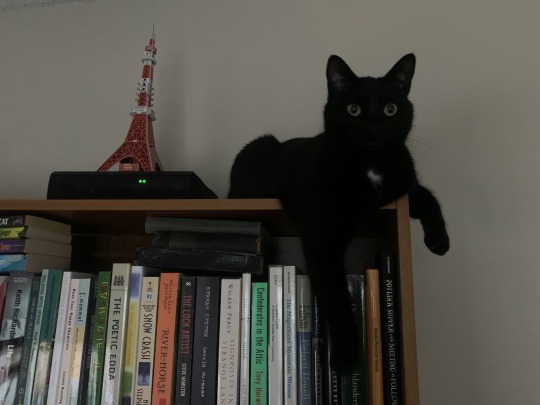
it keeps me sharp, knowing that i am only a half cup of food away from becoming prey for this beast or happy wednesday imaginary constructs
#boba is boba for goths#boba asked me for raw bacon#boba likes skateboarding videos too#bookshelves#when i imagine boba imagining eating a chipmunk they taste like nutella#tokyo tower#boba#the poetic edda#edisto#greasy grimy gopher guts#confederates in the attic#potluck supper with meeting to follow#black forest cake#a woman named drown#end of message
61 notes
·
View notes
Text


lunchtime bio and sushi / billy at sunset
04 FEBRUARY 2024 | 43/100 DAYS OF PRODUCTIVITY
woke up sooo late, but i was having a really weird dream that i can't remember the specifics of, but tom holland was in it as the antagonist
leftover sushi from last night for lunch while i finished a 75-question pset for physiology
went to choir practice for the cultural show i'm gonna be part of
sunday reset! went grocery shopping and am washing my sheets
now slogging away at the endless readings for my other classes
wearing a mask in public is an act of love!!
🎧: voulez-vouz - abba (best abba album, u can't change my mind)
📚: confederates in the attic - tony horwitz (26%); the body in pain - elaine scarry (9%)
i had a friend make a joke about the "light reading" i'm doing, and she was so real for that, reading one book about neo-confederates and one about war/torture/pain is making for some real "light reading"
#studyblr#100 days of productivity#100 dop#study aesthetic#uniblr#studyspo#college#study motivation#uni#galestudies
263 notes
·
View notes
Text

favorite part of flowers in the attic is this one single throwaway line that implies chris is a confederate sympathizer that is then never remarked on again
30 notes
·
View notes
Text
American Gods’ incomplete bibliography (3)
If you want to have access to the full, original bibliography as prepared by Neil Gaiman (it has a lot more info I do not put in my posts - my posts are just summaries and recaps of the original bibliography) you just need to go check Neil Gaiman’s website right here: https://www.neilgaiman.com/works/Books/American+Gods/in/183/?type=Books&work=American+Gods
7) First Nations myths
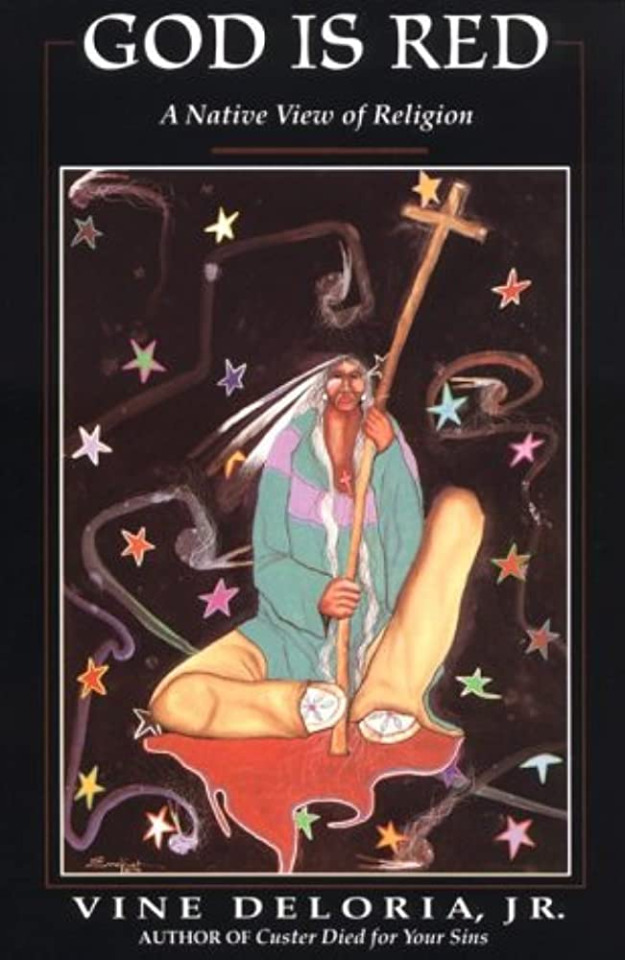
God is Red: A Native View of Religion
Neil Gaiman considers it a “very readable book about religion from a Native American standpoint” - though he was a bit puzzled by how the middle of the book “wander into Velikovsky”.

The Religions of the American Indians

American Indian Myths and Legends
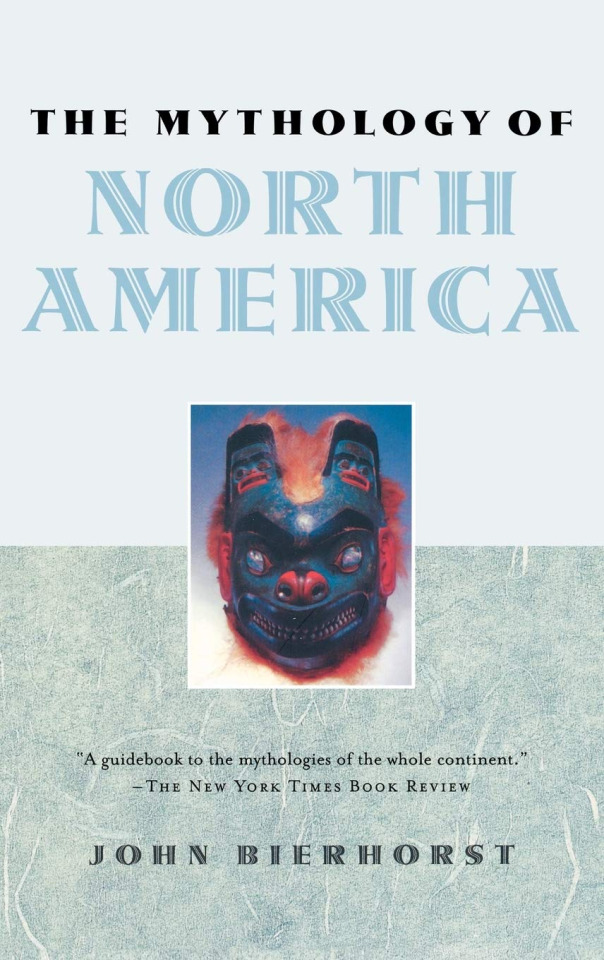
The mythology of North America
8) Background books

On the Rez
A book about the Oglala Sioux on Pine Ridge Reservation, one of the porrest places in America (at least at the time Neil Gaiman put together his bibliography), and about SuAnne Big Crow, a basketball player.

Confederates in the Attic: Despatches from the Unfinished Civil War
Neil Gaiman bought and tried to read it in preparation for American Gods, but couldn’t get into it... It took him two whole years to get into it again, as he was writing American Gods, and he devoured it.

The Forbidden Zone
Neil Gaiman first read a chapter of this book while doing online research about slaughterhouses. Despite the book being out of print, he managed to obtain a copy from a New Mexico bookstore - and this book ended up shaping and informing American Gods in many ways, both direct and indirect. Neil Gaiman is really sad that it is out of print ; and he points out that he has been a fan of the author, Michael Lesy, ever since another one of his books, “Wisconsin Death Trip”, about painting a darker and disturbing picture of the Wisconsin in frontier times. Wisconsin Death Trip is in fact another one of the books that influenced American Gods: some anecdotes and attitudes from this book ended up being present in the Lakeside parts of the novel.

The Day of the Dead and other reflections
(Of its actual title, The Day of the Dead and other mortal reflections)
Neil Gaiman considers the author one of his favorite essayist alongside David Quammen - and it is from this book that Neil Gaiman “got” Coatlicue.

Stranger from a Distant Shore: A History of Asian Americans
Neil Gaiman used this book to research a lot of stuff that “never worked its way into American Gods”, but that will maybe appear in another book. At least, this is what he writes in the bibliography, but since we are all American Gods fan of modern days, we now know what he referred to in the bibliography: the “Somewhere in America” deleted section about a kitsune ending up in a Japanese internment camp of WWII America.
9) African heritage
As Neil Gaiman says, these are the books he used concerning Mr. Nancy, and “the tale of the twins” (Wututu and Agasu).
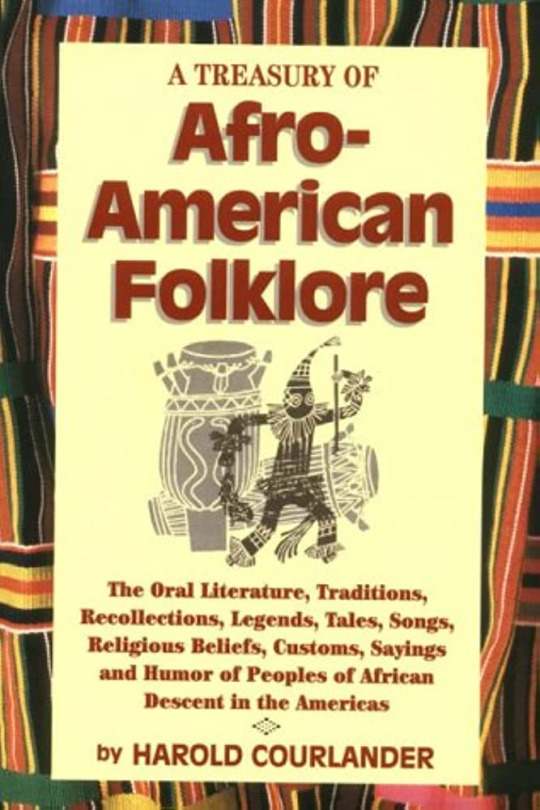

A Treasury of Afro-American Folklore + A Treasury of African Folklore, by Harold Courlander
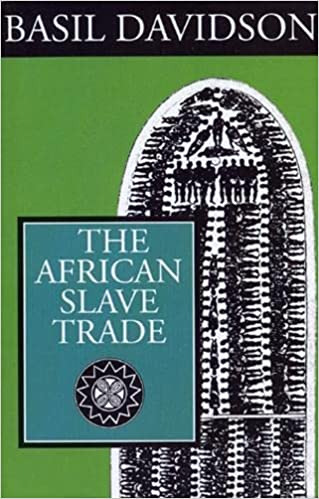
The African Slave Trade, by Basil Davidson

The Slave Trade: The Story of African Slave Trade, 1440-1870
(Of its actual name, “The Slave Trade: The Story of the Atlantic Slave Trade)
Neil Gaiman precises that he took a lot from this book, written by Hugh Thomas, alongside Bullwhip Days (see below) - but he also admitted that he had to downplay what actually happened historically when writing “American Gods” because he didn’t want to turn his scenes into an “atricity exhibition”.

Bullwhip Days: The Slaves Remember - An Oral History
In Neil Gaiman’s words, “Urgent, human narratives and utterly heartbreaking”, as this book is a collection of the testimonies of the last surviving Americans who had been slave, collected in the mid-1930s.
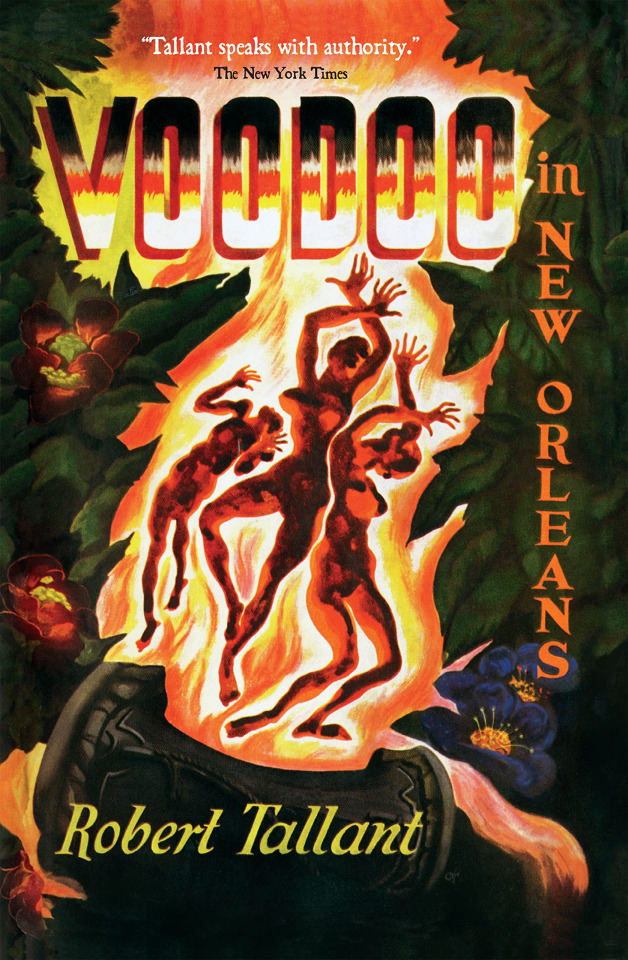
Voodoo in New Orleans
Neil Gaiman explains that this book does not manage to convey the actual feel of the New Orlenas Voodoo, but it is an excellent book when it comes to the history of the “various Maries Laveau or Marie Laveaux”. However, if someone wants a better book by Robert Tallant, they should check Gumbo Yaya (see below)

Gumbo Yaya
Neil Gaiman was offered this book as a gift by Nancy Collins, and he realized he did need it a lot. It is an excellent book covering the folk beliefs, magic and folklore of New Orleans and Louisiana.
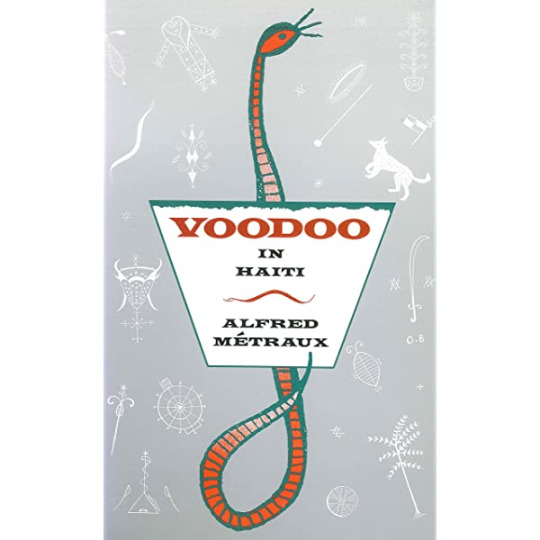
Voodoo in Haiti
A “fairly useful and interesting book”, according to Neil Gaiman. He does say that there is a lot of better books about the topic of Haitian voodoo, but he included it in the list because it was the book he used to check stuff when writing American Gods.
#neil gaiman speaks#american gods bibliography#american gods#voodoo#african mythologies#afro american history#history of slavery#native american mythology#american history#asian american history#bibliography#references#books#neil gaiman
34 notes
·
View notes
Text
i was tagged by @happy-beeeps for this! thank you so much :) :)
last song: hits different by taylor swift
currently watching: lucifer
currently reading: confederates in the attic: dispatches from the unfinished civil war by tony horwitz (i am getting relentlessly teased by my family for reading a nonfiction book for fun, but it's a fascinating look at why so many people in the american south won't let the civil war go, and i was born and raised in the north, plus i didn't get a history degree for nothing lol)
current obsession: star wars (really mostly the clones and prequel era in general) and taylor swift, but my agent carter obsession is always lurking and i am one bad day from getting fully obsessed with it again 😂
tagging: anyone who wants to share :) i never know who to tag with these things
2 notes
·
View notes
Text
A possible AI future
A possible AI future
https://seths.blog/2024/09/a-possible-ai-future/
Persistent, connected and kind.
Most visions of the internet in 1995 were about individuals interacting with content online. It turns out that the internet (inter plus net) is actually about connection. The apps and businesses that were most successful connected people–to ideas, to things or mostly, to each other.
The current range of AI feels like content creation. You can have an AI write your high school essay, draw you a picture or invent a recipe.
But perhaps history will repeat itself. Perhaps developers will realize that persistent knowledge of what came before and who needs help and connection is the next frontier.
(Alas, history may also repeat itself when venture backed companies build networks that are seductive and sticky, and then, once we depend on them, will intentionally make them worse to earn more profit–but perhaps we can, forewarned, guard against this).
We’re not far from many people spending their entire day with Bluetooth earbuds on, particularly as augmented reality gives us information audibly. And of course, if our ears are connected, the system knows what we’re saying and hearing.
We’re already living in a world where much of what we say and do is intermediated by our phones and keyboards. Again, the system knows.
So… what happens when the AI in our lives begins acting like a thoughtful, patient and trusted friend? Not just like the AI in the movie Her, but more focused on our networks and connections. Who’s trustworthy, talented, available or in need… It knows what’s happening now, but also what happened yesterday. Not just to us, but to those in our circle and the people they know as well…
You’re about to throw out an old board game from the attic. The AI whispers, “Hold a sec, I think a neighbor down the street has been looking for something just like that–want me to sell it to him?”
A company seeking RFPs invites all its suppliers to submit confidential overviews of their supply chain. An AI reads the material and creates Pareto optimal connections, building a confederation of several suppliers who can work together to build something faster and more efficiently than any could do alone.
Your fridge knows you love organic strawberries, and organizes 100 neighbors to buy a farmer’s entire crop, reducing waste and risk and cutting costs for everyone.
Three people are leaving a conference and they’re all calling a car to take them to the airport. Perhaps the AI offers a carpool.
We’re headed off to a community meeting, and we let the AI know that if someone there is hiring for the kind of job we’re good at, we’re open to a connection.
This is a level of intimacy, attention sharing and data that dwarfs anything that has come before, and it brings with it huge issues of permission, control and privacy.
I can think of a thousand ways that this power could be misused, manipulated and go terribly wrong. I have also seen the internet go wrong too. But this is only the beginning of the AI age, and it might help to find a north star, a standard for what happens when the connection machine works for us, instead of against us.
0 notes
Text
Bergen is lovely
I am no longer grumpy; the weather has cleared; I am off the boat; and Bergen is lovely. I collect the Morgan and was surprised to see that the hold was now full and had around 30 cars. There seems to be quite a few people who like me, take the boat for a few stops and not all the cruise. Importantly the Morgan starts and the noise is not too throaty, but hold your breath for the exhaust please.
I am last out and just in front of me is a pulls with a seriously posh Porsche 2 seater. He does a few of the poser Porsche stuff - ie revs a bit; presses a button and puts his roof down (takes me 10mins to get mine down and twice that to put it up); and another button and a back ‘go faster spoiler’ fin comes up. Meanwhile the wife is taking a pic of the Morgan! We funnel round to the exit which is a different and narrower door than when I got on and requires a sharp left hand to line up. Lots of inching forward, reversing and gesticulating taking place. This becomes a matter of pride. I am going to do this in one go, no inching, no reversing and no need for any flapping ….and I did. Hurray for the girls! Big boy (the one who had dropped my keys and I took a shot of him having to lye down to recover them) shouts ‘good luck’ and waves. We are off.
I am going to say two last things about the Hurtigruten and then shut up for ever more. The first is that for those who want a floating retirement village, with jigsaws, knitting and basically nothing much else to do, they do it well. And second, it was me who thought that it would be a good way to travel north/south. No one persuaded me. What of course I should have done is hopped down the coast taking a clutch of the short distance drive on drive off ferries instead. But so what.
I have booked a hotel on the edge of the Bryggen which is the old part of the port and has the Hanseatic league history. I trundle over the cobbles which rattles the entirety of the car and excellent, they a parking place for me. This hotel is a conversion of an old warehouse, is just what I fancied and and I am on what will have been the attic floor and so have a brilliant view. But first I have the call to take from the PRA/Bank of England on liquidity (the swotting I have been doing) and just make it - 90 minutes later I am done and out I go for a look.

Coming into Bergen from the sea means that you can totally see why this has been such an important port and city for so long. Deep water, well sheltered and lots of natural quaysides.


The city was founded some 1,200 years ago and the Bryggen which now lines the east side of the harbour is where the earliest buildings were erected. The Hanseatic league established a trading post here in the 14th century and it grew from there. I should be clear that the Hanseatic proposition which was a group of northern european traders/trading nations forming a loose confederation for the purposes of enabling trade and the free flow of goods, is my view of how to have sustainable long term multi country relationship. The League had huge trade, and economic influence for over 500 years.
Every system has its time, state boundaries and relationships changed and the league disintegrated in the late 1600’s. Meanwhile I read on a history plaque hanging outside a museum, that the reason Norway became part of Denmark from the early 1500’s and for the next three hundred years, was because the Black Death (the Plague) wiped out 60% of their population and that it was our fault as it was brought to Norway in a ship from England.


Having walked the Bryggen, I head for the fish market at the head of the harbour. This is a row of fish stalls with restaurants alongside under canvass. There is a system. Choose your meal from the menu (the three options are fish, whale and shellfish); pay at the stall and join the queue for a seat under canvass.

There is a but. A somewhat raised voice exchange in front of me in ‘globe-ish’ and so understandable, reveals that this area is not allowed to sell alcohol and so all drinks are non alcoholic. However as the raised exchange develops it appears that what the locals do is rock up with their own beer or wine and then order at the restaurant an alcohol free drink. So I nip back to my hotel for that packet of Chablis; return to the fish market; check it’s ok; get a seat; and adventurously order the dish of the day. Pathetic I know, but delicious it was.
Streets are awash with all age groups.
Sun is setting -or as much as it does at this time of year- and the evening clouds suggest that tomorrow will be wet.


0 notes
Text



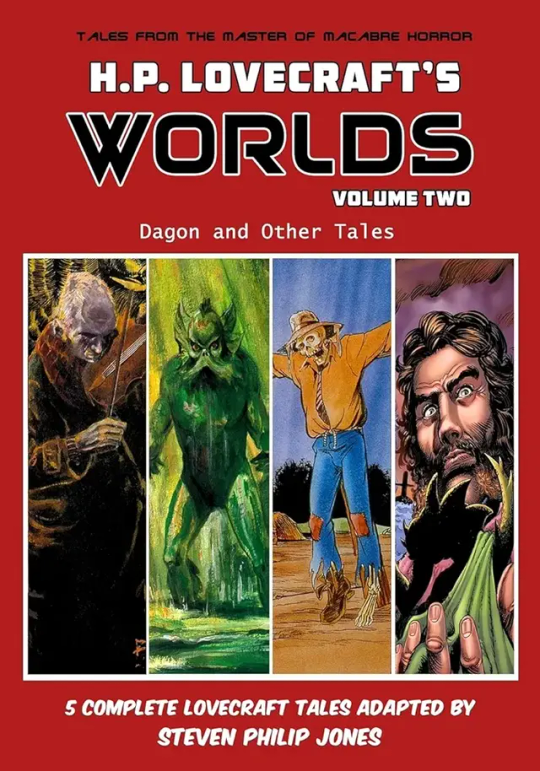
Pics: All of them are pretty much self explanatory, being book covers...
1902: Output.
Life: Nothing actually changed for Lovecraft this year. He was still being mentored at home. And he still read thru his grandad's attic library...
His mom was still at odds with her only child. But, she & her aunts also continued to put his needs above their own. Buying him chemistry sets, Jellygraph equipment & even his own telescope...
Output: Lovecraft finished several poetic works this year: 1st, he finally finished "Metamorphoses", 4 minor poems "Poemata Minora" & a nod to the Confederate flag.
1. Ovid's "Metamorphoses" has already been discussed but, here's a recap -
This is a random collection of ancient Roman myths. The tales are mostly not connected, until the last 3rd of the work.
Plot wise, it ranges from the creation of the world to Caesar's murder.
It's theme is mostly about people making rash decisions due to love &/or passion.
As for any 'lessons', there's "change is eternal" & "ordering anything is futile!" Do you think HPL learned something from this?
Since Ovid dared to criticize Emperor Augustus, the writer was exiled to the Black Sea area - where he died.
2. Poemata Minora, Volume Two - These poetic 'series' was written when Lovecraft was 11 years old & self published via Jellygraph.
These works are dedicated, by HPL, "to the Gods, Heroes & Ideals of the Ancients." His preface makes mention of "my" Odyssey, Iliad, Aeneid & the like...
Are there more early poems by HPL? Or, is he talking about his grandpa's array of books?
Volume One is considered lost. But, Volume Two is made up of 5 very short poems. Not really flash fiction, but minute mood pieces.
Quotes:
A. Ode to Selene (with a shout out to Diana) -
A1. "Hide harsh truth in sweet illusion mild."
A2. "Let my spirit rest amid the past."
B. To the Old Pagan Religion -
B1. "Are there no Dryads in these wooded mounts; Over which I often, in desolation, roam?"
C. On the Ruin of Rome -
C1. "Wither has gone, great city; The race that gave law to all?"
D. To Pan -
D1. "Seated in a woodland glen; By a shallow, reedy stream;... I fell... lulled into... dream."
E. On the Vanity of Human Ambition -
E1. "True bliss, methinks,... man can find; In virtuous life & cultivated mind."
3. CSA 1861 to 1865: To the Starry Cross of the South -
Not about the Confederacy, really, but on their war flag. It was adopted, after the Civil War, as a symbol of the South's heritage of slavery & white supremacy...
Quotes:
A. "Proclaming high the rights of human kind."
B. "The South, by treachery's overthrown."
In A, Lovecraft seems unaware of the irony of the "rights of human kind." While he meant the rights of Whites, we must remember that our own Constitution was written with white, land owning folks in mind - not for any other whites or colored folk...
Luckily, fairer minded politicians (Good Lord!! They exist!) have expanded the original meaning to include all of mankind.
In B, we have an early form of HPL adding modern myths to old lies. What we now know as "False News".
The Confederacy was defeated thru gruesome military battles & massive destruction. Until, Robert E. Lee finally surrendered - or the South would have been totally devastated.
That's how raw northern sentiments ran. But, Lincoln stepped in & used federal funds to help rebuild the South - not long before he was assassinated.
As for the South's leaders, most of them emigrated to Brazil, where some of their settlements still survive...
4. "The Secret of the Grave" might have been written during this year. But, it may just be another name for "The Mystery of the Graveyard."
5A. Also out this year was "The Moon", an early scientific work. Lovecraft wrote that learning astronomy was the single greatest thing to ever happen to him!
5B. He actually dreamed of flying above the planet & plunging out into the dark void...
Criticism: At 11 years old, Lovecraft is slowly connecting myth making with his storytelling abilities. He is also growing up - though he later hated the very idea...
0 notes
Text
Joseph McGill Jr. coming to Natchez for two-day program on slave dwellings

Joseph McGill Jr., founder and director of the Slave Dwelling Project
NATCHEZ, Miss. -- Joseph McGill Jr., a renowned authority on slave dwellings, is coming to Natchez for a two-day program that will feature a lecture and a living history campfire conversation.
The lecture, which is titled, “The Education Value of Sleeping in Slave Dwellings: Mississippi Edition,” will be presented at 6 p.m. Friday, April 14 at Historic Natchez Foundation. The campfire conversation will be held at 6 p.m., April 15 at the Auburn slave quarters.
Both events are free and open to the public. They are part of McGill’s nationally acclaimed Slave Dwelling Project. The two-day program is being hosted by Historic Natchez Foundation, Natchez National Historical Park, and Our Restoration Nation.
McGill is a history consultant for Magnolia Plantation in Charleston, S.C., and the founder and director of the Slave Dwelling Project. Through the Slave Dwelling Project, he has arranged for people to “sleep in extant slave dwellings,” providing experiences that “brought much needed attention to these often-neglected structures that are vitally important to the American built environment,” McGill said in a biographical sketch.
Since 2018, McGill has conducted more than 250 overnights in about 100 different sites in 19 states and the District of Columbia.
As a field officer for the National Trust for Historic Preservation, McGill worked to revitalize the Sweet Auburn commercial district in Atlanta, Ga., and to develop a management plan for the Mississippi Delta National Heritage Area.
McGill is a former executive director of the African American Museum in Cedar Rapids, Iowa, and a former director of history and culture at Penn Center, St. Helena Island, South Carolina. He has also served as a National Park Service park ranger at Fort Sumter National Monument in Charleston.
McGill holds a Bachelor of Arts degree in Professional English from South Carolina State University, Orangeburg, S.C. He is a veteran of the U.S. Air Force.
McGill’s work is recognized by authors and historians. He is featured in the books “Confederates in the Attic” by Tony Horwitz and “Behind the Big House” by Jodi Skipper.
Historic Natchez Foundation is located at 108 S. Commerce St. and Auburn is at 400 Duncan Avenue, both in Natchez. Parking is in the rear of Auburn, which is accessed from the second road on the right inside the Duncan Park Gate.
For more information, contact Carter Burns at Historic Natchez Foundation: Call 601-442-2500 or send email to [email protected]. Information about the Slave Dwelling Project can be found at https://slavedwellingproject.org/
#SlaveDwellingProject#SlaveQuarters#JosephMcGillJr.#BlackHistory#NatchezHistory#VisitNatchez#MississippiHistory
0 notes
Text
Price: [price_with_discount]
(as of [price_update_date] - Details)
[ad_1]
Popular media can spark the national consciousness in a way that captures people’s attention, interests them in history, and inspires them to visit battlefields, museums, and historic sites. This lively collection of essays and feature stories celebrates the novels, popular histories, magazines, movies, television shows, photography, and songs that have enticed Americans to learn more about our most dramatic historical era.
From Ulysses S. Grant’s Memoirs to Abraham Lincoln: Vampire Hunter, from Roots to Ken Burns’s The Civil War, from “Dixie” to “Ashokan Farewell,” and from Civil War photography to the Gettysburg Cyclorama, trendy and well-loved depictions of the Civil War are the subjects of twenty contributors who tell how they and the general public have been influenced by them. Sarah Kay Bierle examines the eternal appeal of Gone with the Wind and asks how it is that a protagonist who so opposed the war has become such a figurehead for it. H. R. Gordon talks with New York Times–bestselling novelist Jeff Shaara to discuss the power of storytelling. Paul Ashdown explores ColdMountain’s value as a portrait of the war as national upheaval, and Kevin Pawlak traces a shift in cinema’s depiction of slavery epitomized by 12 Years a Slave. Tony Horwitz revisits his iconic Confederates in the Attic twenty years later.
The contributors’ fresh analysis articulates a shared passion for history’s representation in the popular media. The variety of voices and topics in this collection coalesces into a fascinating discussion of some of the most popular texts in the genres. In keeping with the innovative nature of this series, web-exclusive material extends the conversation beyond the book.
ASIN : B085KXVZ82
Publisher : Southern Illinois University Press; 1st edition (10 February 2020)
Language : English
File size : 4946 KB
Text-to-Speech : Enabled
Screen Reader : Supported
Enhanced typesetting : Enabled
X-Ray : Not Enabled
Word Wise : Enabled
Print length : 272 pages
[ad_2]
0 notes
Text
Confederates in the Attic: Dispatches from the Unfinished Civil War - Tony Horwitz
0 notes
Text


early morning readings / evening in the stacks
01 APRIL 2024 | 71/100 DAYS OF PRODUCTIVITY
woke up at 5am this morning to finish the readings for a paper i had due at 5pm, and i gotta say that procrastination kicked my ass
finished the readings and started outlining my paper before my bio lab at noon
we did a renal function lab, which meant we had to pee in a cup every 30 minutes and test it, kind of a gross lab overall since it wasn't super sterile, and the whole room smelled like pee
went home after and finished my paper!
went to my sociology lecture, talking about genetic testing, which was super cool
had a dance practice for my cultural show in two weeks, finished choreographing and teaching the dance!
spent the rest of the night finishing readings for my seminars tomorrow
🎧: spotify's liminal mix
📚: confederates in the attic - tony horwitz (55%); we are a haunting - tyriek white (70%)
#studyblr#100 days of productivity#100 dop#study aesthetic#studyspo#study motivation#uni#college#academia#galestudies
135 notes
·
View notes
Text

Book Review: Tony Horwitz - “Spying on the South: An Odyssey Across the American Divide” *
Recreating an 1850s American journey by a 19th-century New York Times correspondent writing as “Yeoman,” Tony Horwitz details how much has changed - and much more has remained the same - in “Spying on the South: An Odyssey Across the American Divide.”
Sadly, this book turns out to be the swan song from the Pulitzer Prize-winning reporter and author of “Confederates in the Attic;” Horwitz, 60, died of a heart attack while taking a walk just after the 496-page book was published. As it goes, "Spying on the South" is an appropriate bookend to "Confederates" and a book that, if it has to be his last, is a fitting end to Horwitz's esteemed career.
Following as closely as possible in Yeoman's 170-year-old footsteps, Horwitz travels by car, barge, train and mule down the Ohio River, through what is now known as the Rust Belt, down to the Delta and across Texas into Mexico to see what remains of Yeoman's time and what has been washed away by the tides of history.
The answers are not much, and not much.
Yeoman - aka the landscape architect and Central Park designer Frederick Law Olmsted - decided to make his journey to the slaveholding South with the goal of finding a way for the country's marching-toward-war sides to find common ground and prevent what would become the Civil War. But he soon found some positions are not defensible and some people cannot be reasoned with. And before his trip was over, Olmsted found himself working clandestinely with progressive-minded German immigrants in Texas who sought abolition.
For his part, Horwitz, traveling in the months leading up to the presidential election that installed Donald Trump in the White House, bunks with crusty barge operators on the Ohio; drinks with Cajuns in Louisiana; and gets hammered on cider at a demolition derby in Texas, recounts stories of post-Bellum, racially charged riots in the South and the monuments that pay tribute to them. He also eats copious amounts of health-destroying food that sidelines one of his traveling companions and makes portions of "Spying on the South" read like an unintentional preview of the author's sad demise.
By the end of his journey, Horwitz - like Olmsted before him - is despairing for his country. However, he retains his hope and when he finishes his trip with a visit to Central Park, he is buoyed by his inspiration's creation and its ability to bridge the economic, social and racial divides the surrounding New York City has built up over the centuries.
"Spying on the South" is not Horwitz's best work - that honor falls squarely on "Confederates in the Attic" - but it's a perfect capper to a near-perfect, and prolific career of reportage and writing. It stands as a gift to Americans of all stripes who want to learn how we got to where we are and how we might chart a different course to attain the high ideals we've always espoused and rarely lived up to.
Grade card: Tony Horwitz - “Spying on the South: An Odyssey Across the American Divide” - B
* Sound Bites occasionally finds himself interested in something other than music.
8/4/19
3 notes
·
View notes
Link
Y’all. I am crushed. Tony was a friend of a friend, a brilliant author, and the catalyst for my fascination with the American Civil War.
I’m crushed. We’ve lost a brilliant mind.


3 notes
·
View notes
Text
Teen Set March 1967: Carol Gold Talks to the Yardbirds (part 2)
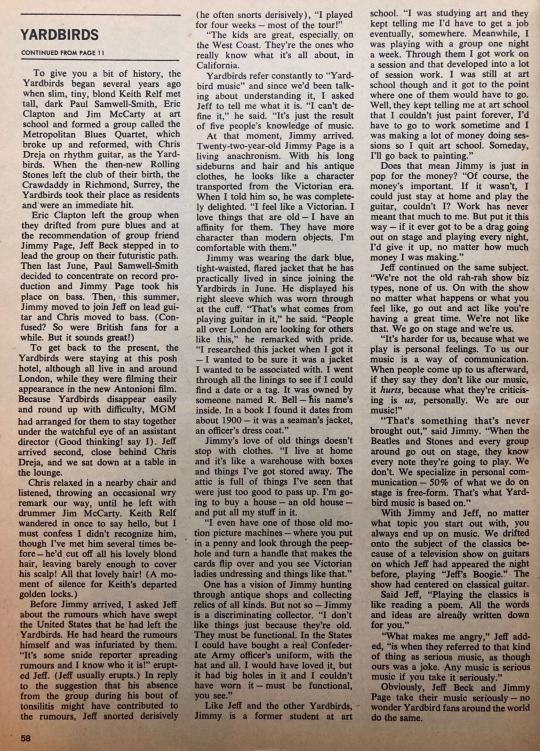
Here is the complete rest of the Teen Set article by Carol Gold typed up (sorry for any typos) that includes an interview with Jimmy where he talks about his vintage coat extensively and his love of old things. Honestly I could listen to him talk about the things he loves all day. This is a gem of an article/interview.
One of my favorite parts: Jimmy the Victorian
“At that moment, Jimmy arrived. Twenty-two-year-old Jimmy Page is a living anachronism. With his long sideburns and hair and his antique clothes, he looks like a character transported from the Victorian era. When I told him so, he was completely delighted. “I feel like a Victorian. I love things that are old- I have an affinity for them. They have more character than modern objects. I’m comfortable with them.”
Read on for the full article...
To give you a bit of history, the Yardbirds began several years ago when slim, tiny, blond Keith Relf met tall, dark Paul Samwell-Smith, Eric Clapton and Jim McCarty at art school and formed a group called the Metropolitan Blues Quartet, which broke up and reformed, with Chris Dreja on rhythm guitar, as the Yardbirds. When the then-new Rolling Stones left the club of their birth, the Crawdaddy in Richmond, Surrey, the Yardbirds took their place as residents and were an immediate hit.
Eric Clapton left the group when they drifted from pure blues and at the recommendation of group friend Jimmy Page, Jeff Beck stepped in to lead the group on their futuristic path. Then last June, Paul Samwell-Smith decided to concentrate on record production and Jimmy Page took his place on bass. Then, this summer, Jimmy moved to join Jeff on lead guitar and Christ moved to bass. (Confused? So were British fans for a while. But it sounds great!)
To get back to the present, the Yardbirds were staying at this posh hotel, although all live in and around London, while they were filming their appearance in the new Antonioni film. Because Yardbirds disappear easily and round up with difficulty, MGM had arranged for them to stay together under the watchful eye of an assistant director (Good thinking! say I). Jeff arrived second, close behind Chris Dreja, and we sat down at a table in the lounge.
Chris relaxed in a nearby chair and listened, throwing an occasional wry remark our way, until he left with drummer Jim McCarty. Keith Relf wandered in once to say hello, but I must confess I didn’t recognize him, though I’ve met him several times before- he’d cut off all his lovely blond hair, leaving barely enough to cover his scalp! All that lovely hair! (A moment of silence for Keith’s departed golden locks.)
Before Jimmy arrived, I asked Jeff about the rumours which have swept the United States that he had left the Yardbirds. He had heard the rumours himself and was infuriated by them. “It’s some snide reporter spreading rumours and I know who it is!” erupted Jeff. (Jeff usually erupts.) In reply to the suggestion that his absence from the group during his bout of tonsilitis might have contributed to the rumours, Jeff snorted derisively (he often snorts derisively), “I played for four weeks- most of the tour!”
“The kids are great, especially on the West Coast. They’re the ones who really know what it’s all about, in California.”
Yardbirds refer constantly to “Yardbird music” and since we’d been talking about understanding it, I asked Jeff to tell me what it is. “I can’t define it,” he said. “It’s just the result of five people’s knowledge of music.”
At that moment, Jimmy arrived. Twenty-two-year-old Jimmy Page is a living anachronism. With his long sideburns and hair and his antique clothes, he looks like a character transported from the Victorian era. When I told him so, he was completely delighted. “I feel like a Victorian. I love things that are old- I have an affinity for them. They have more character than modern objects. I’m comfortable with them.”
Jimmy was wearing the dark blue, tight-waisted, flared jacket that he has practically lived in since joining the Yardbirds in June. He displayed his right sleeve which was worn through at the cuff. “That’s what comes from playing guitar in it,” he said. “People all over London are looking for others like this,” he remarked with pride. “I researched this jacket when I got it- I wanted to make sure it was a jacket I wanted to be associated with. I went through all the linings to see if I could find a date or a tag. It was owned by someone named R. Bell- his name’s inside. In a book I found it dates from about 1900- it was a seaman’s jacket, an officer’s dress coat.”
Jimmy’s love of old things doesn’t stop with clothes. “I live at home and it’s like a warehouse with boxes and things I’ve got stored away. The attic is full of things I’ve seen that were just too good to pass up. I’m going to buy a house- an old house- and put all my stuff in it.
“I even have one of those old motion picture machines- where you put in a penny and look through the peephole and turn a handle that makes the cards flip over and you see Victorian ladies undressing and things like that.”
One has a vision of Jimmy hunting through antique shops and collecting relics of all kinds. But not so- Jimmy is a discriminating collector. “I don’t like things just because they’re old. They must be functional. In the States I could have bought a real Confederate Army officer’s uniform, with the hat and all. I would have loved it, but it had big holes in it and I couldn’t have worn it- must be functional, you see.”
Like Jeff and the other Yardbirds, Jimmy is a former student at art school. “I was studying art and they kept telling me I’d have to get a job eventually, somewhere. Meanwhile, I was playing with a group one night a week. Through them I got work on a session and that developed into a lot of session work. I was still at art school though and it got to the point where one of them would have to go. Well, they kept telling me at art school that I couldn’t just paint forever, I’d have to go to work sometime and I was making a lot of money doing sessions so I quit art school. Someday, I’ll go back to painting.”
Does that mean Jimmy is just in pop for the money? “Of course, the money’s important. It if wasn’t, I could just stay at home and play the guitar, couldn’t I? Work has never meant that much to me. But put it this way- if it ever got to be a drag going out on stage and playing every night, I’d give it up, no matter how much money I was making.”
Jeff continued on the same subject. “We’re not the old rah-rah show biz types, none of us. On with the show no matter what happens or what you feel like, go out and act like you’re having a great time. We’re not like that. We go on stage and we’re us.”
“It’s harder for us, because what we play is personal feelings. To us our music is a way of communication. When people come up to us afterward, if they say they don’t like our music, it hurts, because what they’re criticizing is us, personally. We are our music!”
“That’s something that’s never brought out,” said Jimmy. “When the Beatles and Stones and every group around go out on stage, they know every note they’re going to play. We don’t. We specialize in personal communication- 50% of what we do on stage is free-form. That’s what Yardbird music is based on.”
With Jimmy and Jeff, no matter what topic you start out with, you always end up on music. We drifted onto the subject of the classics because of a television show on guitars on which Jeff had appeared the night before, playing “Jeff’s Boogie.” The show had centered on classical guitar.
Said Jeff, “Playing the classics is like reading a poem. All the words and ideas are already written down for you.”
“What makes me angry,” Jeff added, “is when they referred to that kind of thing as serious music, as though ours was a joke. Any music is serious music if you take it seriously.”
Obviously, Jeff Beck and Jimmy Page take their music seriously- no wonder Yardbird fans around the world do the same.
Continued article written by Carol Gold from Teen Set March 1967
#jimmy page#the yardbirds#chris dreja#keith relf#jeff beck#jim mccarty#teen set#please tell me more about your vintage coat#and how obsessively you researched#certainly for the better he didn’t buy a confederate uniform#I’m glad jimmy got his old house to put his collections in#jimmy born in the wrong generation page#carol’s side notes crack me up#rip Keith’s golden locks#carol talks to Jimmy and oh yes the rest of the yardbirds#wonder if they were mad she only put in mostly Jimmy
72 notes
·
View notes
Text
Mentioned that Facebook post I found at work this morning and now everyone’s making fun of a mutual friend who was featured in Confederates in the Attic. It’s gonna be a good day
23 notes
·
View notes